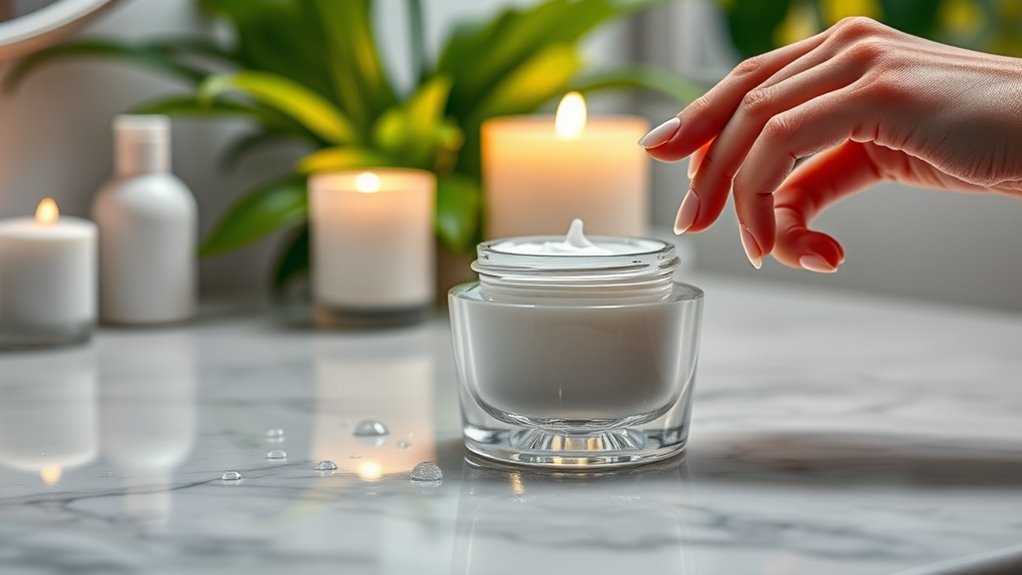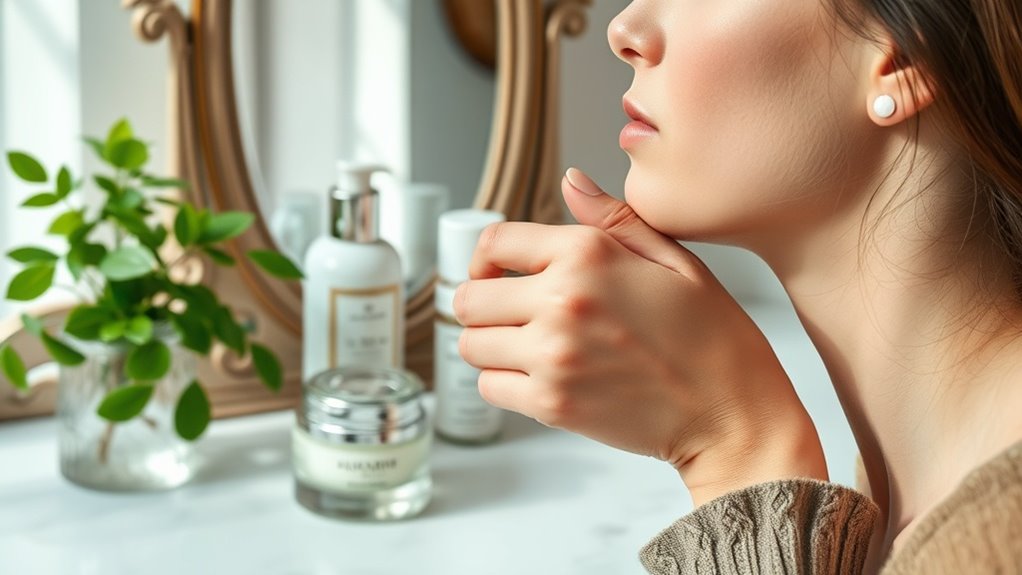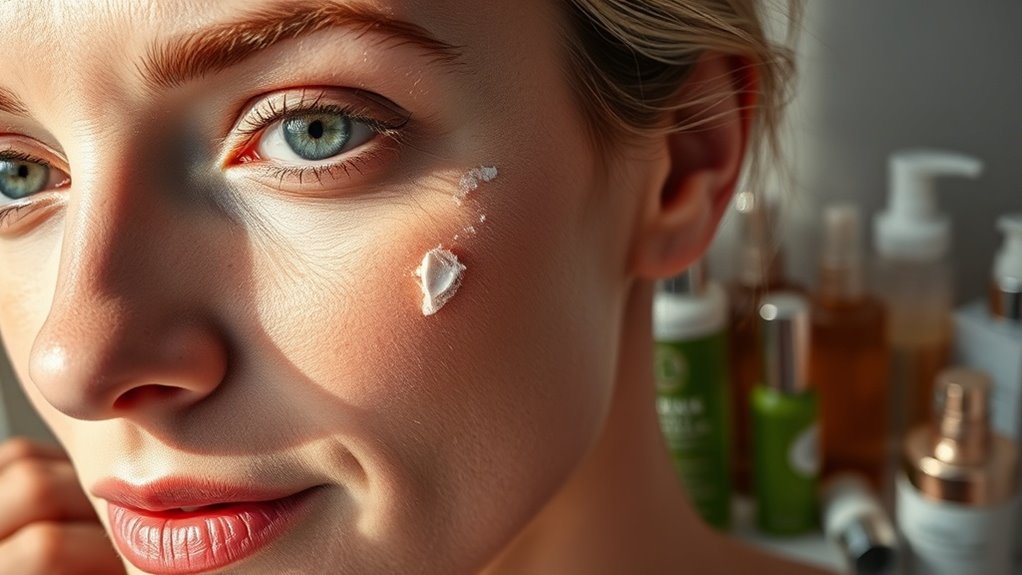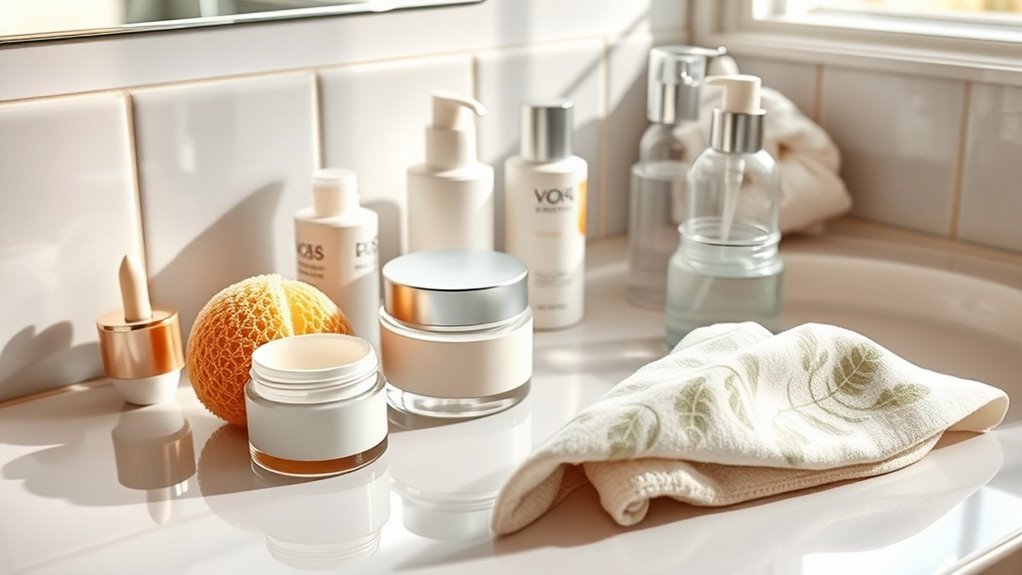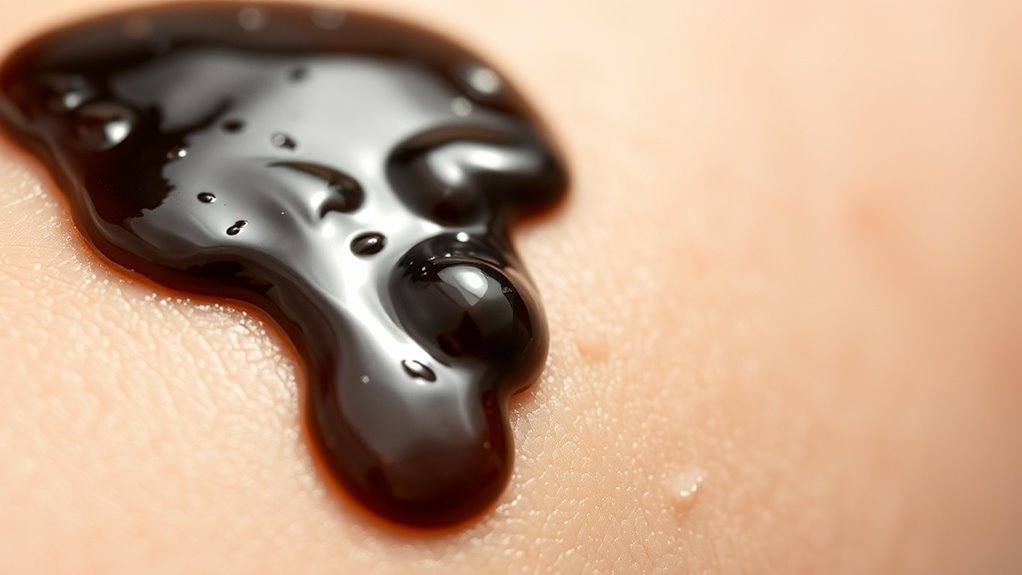Your Night Cream Might Be Causing Breakouts – Here’s How to Tell
If you’ve noticed an uptick in breakouts, your night cream could be to blame. Ingredients like heavy oils and certain emollients may clog pores, leading to redness and blemishes. It’s crucial to recognize the signs your skin is giving you. Identifying problematic formulations might just save your complexion. So, what should you look for to ensure your night cream isn’t sabotaging your skin health? Let’s explore that next.
Common Ingredients That Cause Breakouts
Breakouts can often stem from certain ingredients in night creams that, while intended to nourish the skin, may clog pores or trigger irritation. Common culprits include heavy oils, like coconut oil and mineral oil, which can lead to night cream acne.
Additionally, certain silicones might create a barrier that traps dirt and bacteria, exacerbating breakouts. Fragrance and alcohol are also known irritants that can disrupt your skin’s barrier, promoting inflammation.
You should be cautious with comedogenic ingredients, as they can contribute significantly to pore blockage. Always check for non-comedogenic labels when selecting night creams to minimize the risk of acne.
Monitoring your skin’s reaction after use is crucial to identify ingredients that could be leading to issues. Using products specifically formulated for sensitive skin symptoms can help mitigate the risk of irritation and breakouts.
Signs Your Night Cream Is Flare-Up Trigger
How can you tell if your night cream is causing flare-ups?
First, monitor your skin’s response after applying the product. If you notice increased redness, swelling, or a sudden breakout, your cream may be the culprit. Pay attention to the timing; reactions often occur within a few days of use.
Next, consider if your skin feels excessively oily or congested, which can indicate product buildup. Additionally, look out for changes in skin texture, such as roughness or sensitivity, after application.
If you experience itchiness or a stinging sensation, it may signal irritation. Finally, remember that consistent flare-ups after using a specific cream suggest it’s time to reassess your choice for a better-suited formulation. It’s essential to avoid common acne skincare mistakes that may hinder your progress for clearer skin.
How to Identify Problematic Formulations
When selecting a night cream, understanding its ingredient list is crucial, as certain components can lead to skin issues.
Look for potentially comedogenic ingredients like mineral oil, lanolin, and coconut oil, which can clog pores and cause breakouts. Avoid fragrances and alcohol, as these can irritate sensitive skin.
Pay attention to the texture; heavy, greasy formulations are often problematic. Consider products labeled non-comedogenic or oil-free if you’re acne-prone.
Check for active ingredients like salicylic acid or benzoyl peroxide, which can help prevent breakouts but may not be suitable for all skin types. Additionally, incorporating a quick daily routine can help maintain your youthful appearance while minimizing breakouts.
Always conduct a patch test before fully incorporating a new product to identify any adverse reactions early.
Your skin’s health is a priority, so choose carefully.
Alternative Night Cream Options for Acne-Prone Skin
For acne-prone skin, selecting the right night cream can make a significant difference in your skincare routine.
Look for non-comedogenic options that won’t clog pores, often labeled as oil-free or lightweight. Ingredients like hyaluronic acid provide hydration without adding oil, while niacinamide helps reduce inflammation and regulate oil production. Consider formulations containing salicylic acid, which can penetrate pores and assist in preventing breakouts. Additionally, retinol can promote cell turnover and improve skin texture; however, start with lower concentrations to minimize irritation.
Avoid heavy creams with fragrances or oils, as these can exacerbate acne. Always patch-test new products to ensure they’re compatible with your skin type. It’s important to stay mindful of excess grease as well, as this can contribute to breakouts. Tailor your selection to your specific needs for optimal results.
Tips for Transitioning to a Breakout-Free Skincare Routine
While you’re eager to achieve a breakout-free complexion, transitioning to a new skincare routine requires a strategic approach.
Start by identifying your current products—particularly those with heavy ingredients that may clog pores or cause irritation. Gradually introduce products formulated for acne-prone skin, prioritizing those with non-comedogenic labels.
Opt for a consistent regime: cleanse, treat, moisturize, and protect daily. Patch-test new products to gauge skin sensitivity before full application.
Additionally, consider maintaining a skincare journal to track changes in your skin’s response.
Limit the introduction of multiple new products at once to avoid overwhelming your skin.
Lastly, consult with a dermatologist for personalized recommendations tailored to your unique skin type and concerns. Remember, even oily skin can benefit from hydration, so don’t skip the moisturizer altogether.
